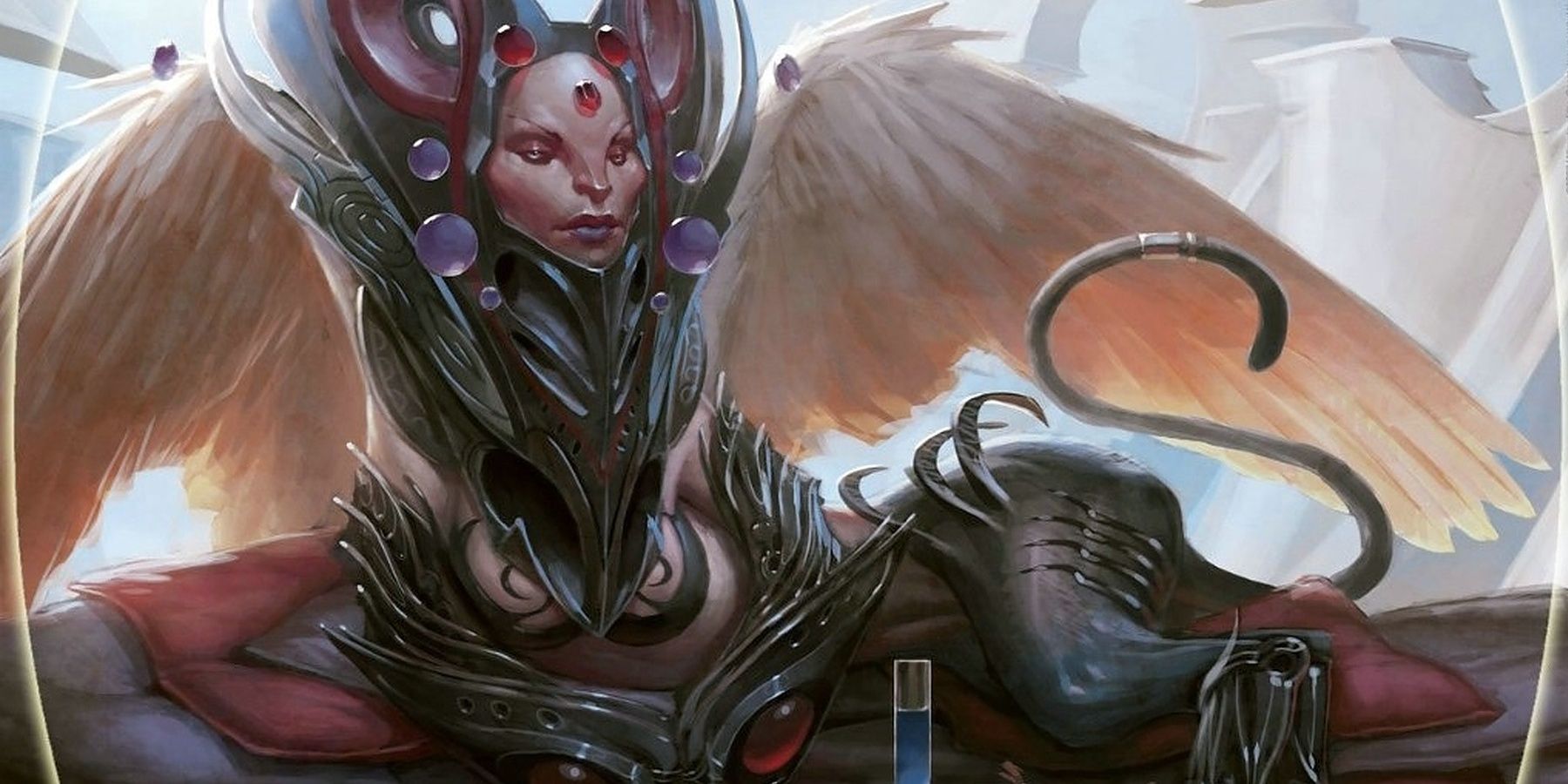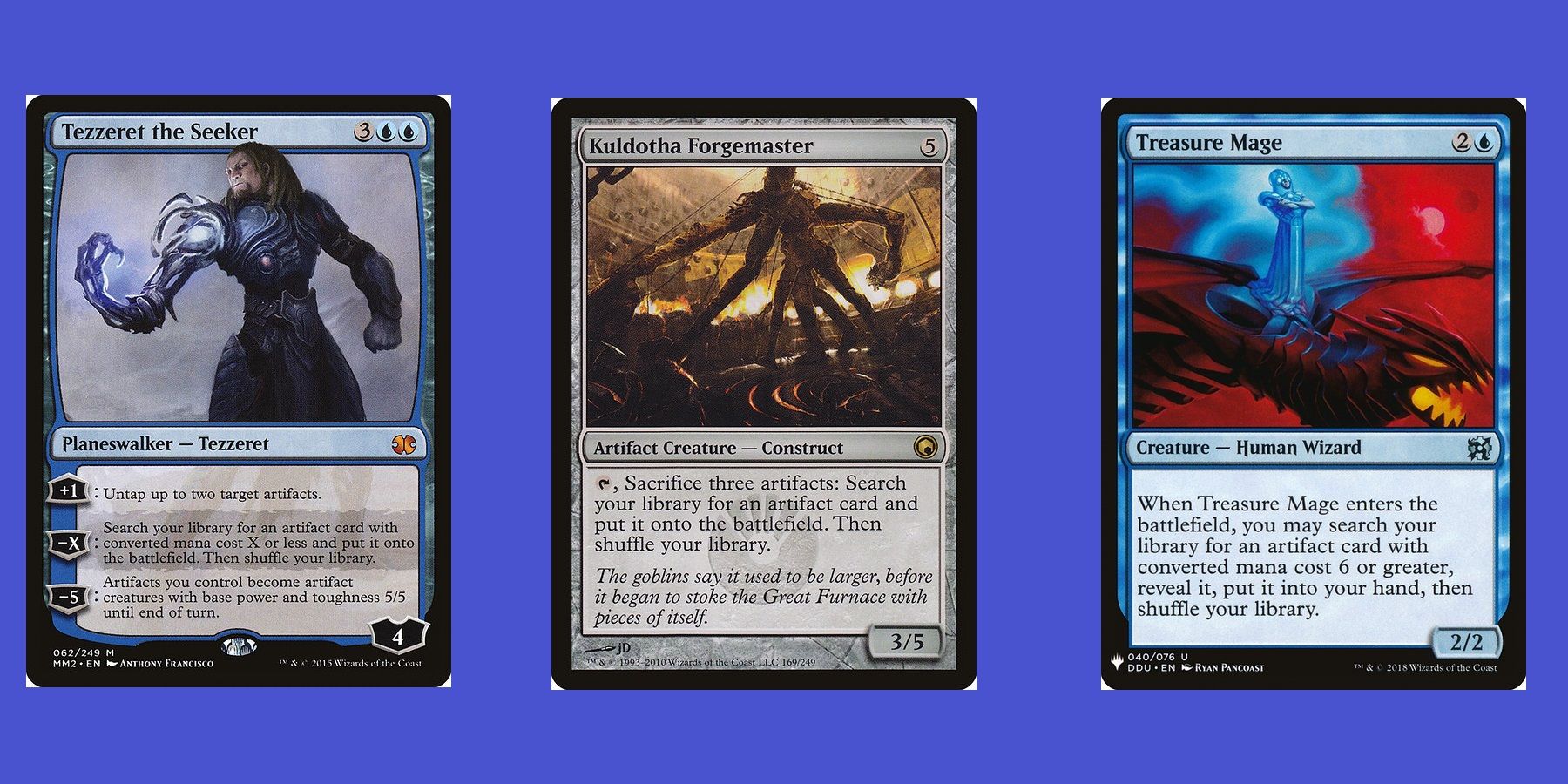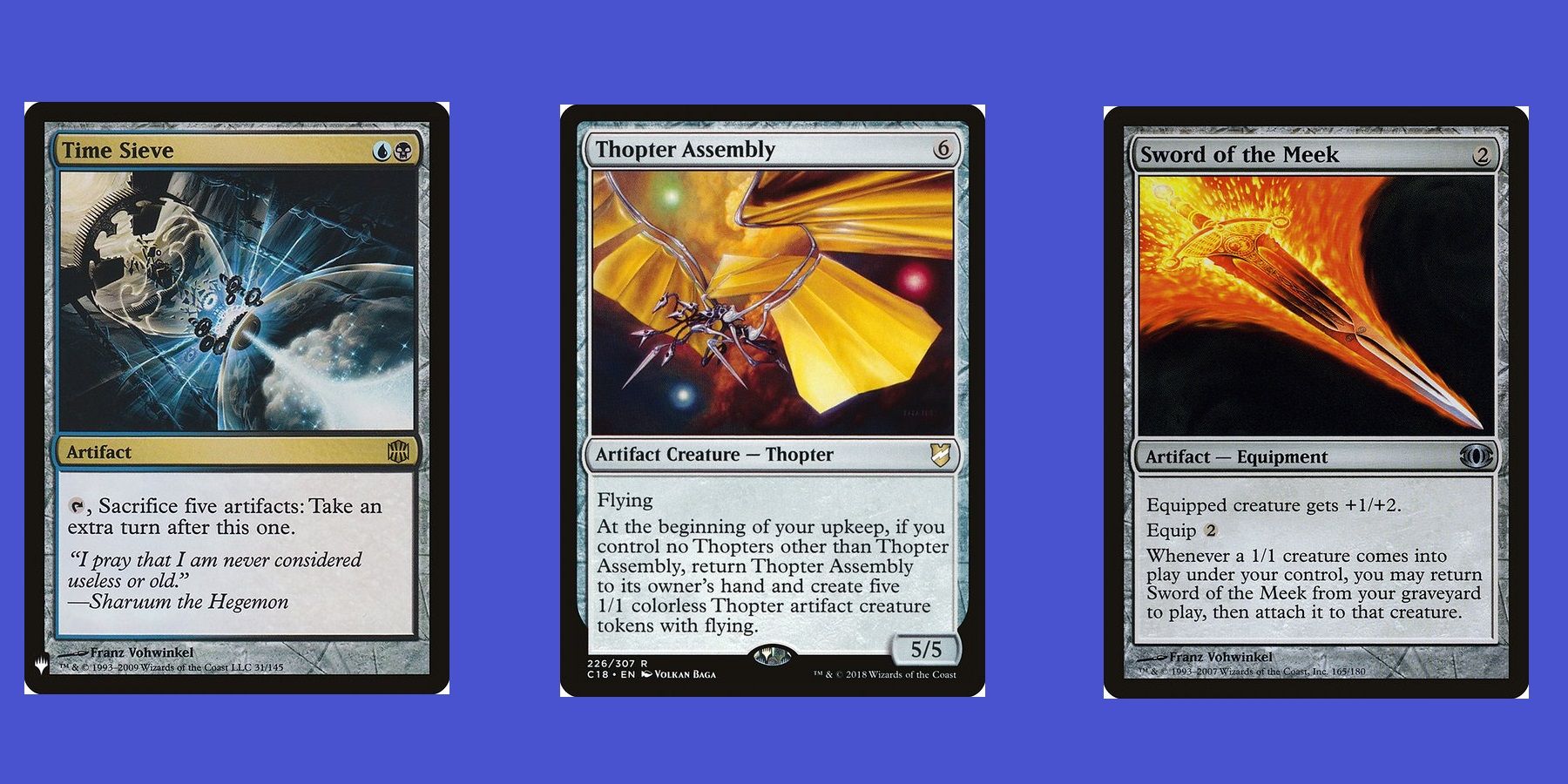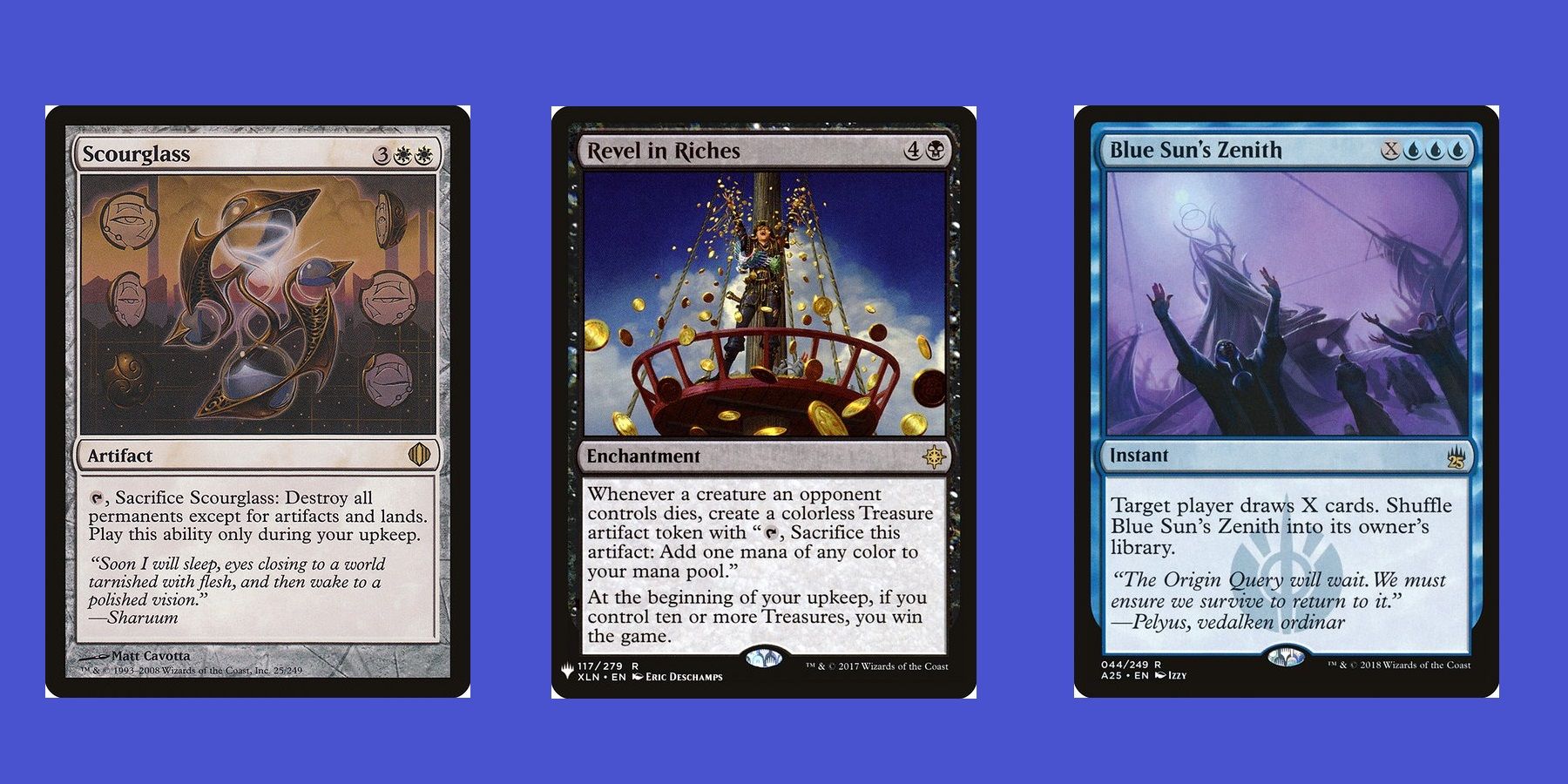Magic: the Gathering has proved hugely popular since the first set released back in August 1993. Many new formats have arisen since then from Standard (the central format) to competitive formats (like Modern and Legacy) and many more beyond. A fan-made and company-supported format is Commander (also known as EDH).
Many legendary cards are perfectly suited to forming a Commander deck, and the newest set, Ikoria: Lair of Behemoths, added all kinds of great legendary creatures for Commander. But let's not forget the old classics, like Sharuum the Hegemon. This is an Esper-colored flying beater with a fondness for artifacts and the graveyard.
Tutoring For Artifacts
Powerful artifact decks know how to make artifacts synergize with each other, and artifacts are capable of terrifying combos. A Sharuum deck needs ways to consistently get those artifacts, and this is where the tutor's power of blue and black comes into play.
Black is the primary tutor color in Magic, but when artifacts are the theme, blue can match black's tutor power. A good Sharuum deck will use creatures, planeswalkers, and sorceries that can ransack your deck for a particular card type and put it into your hand or graveyard, allowing for some quick combos. Don't be afraid to put some of those cards in your graveyard since Sharuum can get them back with its ETB ability. For example, Emry, Lurker of the Loch isn't an artifact, but it can mill your deck for four cards, then allow you to cast artifacts from your graveyard. This isn't a mono-blue deck; you're using black, too, so take advantage of black's graveyard affinity.
Aside from that, be sure to vary your tutors, since some are more specific than others. The "T-Mage" series can help, like Treasure Mage (which can find huge artifacts), Trinket Mage (which can find cheap ones like Skullclamp or Sol Ring), or Trophy Mage. Tezzeret the Seeker can use its middle ability to tutor for artifacts, and Whir of Invention is like the Chord of Calling for artifacts. Feel free to throw in regular black tutors, like Diabolic Tutor, if you need some other card type, or tap into white's tutor power with Idyllic Tutor to find a hard-hitting enchantment like Ghostly Prison or Thopter Spy Network. White is often considered the weakest color in Commander, but it does have a role to play here.
Combo Mania
There is a good reason why you want all these tutor cards in your Sharuum deck: so you can find all kinds of combos and set them into motion. Commander is known for its grindy games, with board wipes and board stalls slowing things down. A combo can cut right to the chase and win you the game in many cases.
Some combos once existed in Modern, Legacy, or the now-defunct Extended format. For example, Time Sieve and Thopter Assembly are a two-hit combo that can secure your victory via infinite turns, a tricky power indeed. Assuming Time Sieve is on the table, you can cast Thopter Assembly and ensure it stays on the battlefield until your next upkeep. Then, make sure you control no other Thopters, return the Assembly to your hand and make five 1/1 Thopter tokens. Sacrifice all five to Time Sieve's ability, and now you've got an extra turn on your hands. Recast Thopter Assembly, and you can keep looping this to buy enough time to win.
That's not all. Sword of the Meek can attach to a 1/1 creature for free, and Thopter Foundry allows you to melt down an artifact to make a 1/1 Thopter token. Naturally, Sword of the Meek can attach to it. Most importantly, you gain one life each time you make a token with Thopter Assembly. This means you can sacrifice the Sword to the Foundry and have the Sword come back from the graveyard to attach to that token. You can gain a lot of life this way and make an army of Thopters.
The Rest
In between all this, tutor and combo action are the mundane cards that make a Commander deck work. The likes of Sol Ring, Command Tower, Lightning Greaves, and Evolving Wilds are practically a given, but what else should be included?
Esper colors are good at control. If the board state is hostile and you don't have a combo, use the many boardwipes in these colors: Wrath of God, Damnation, Scourglass, Merciless Eviction, Cyclonic Rift, or Supreme Verdict. Two to five board wipes will likely do for a deck like this, and Scourglass should definitely be among them. Similarly, use spot removal for any permanent type, from Swords to Plowshares and Utter End to Mortify and Detention Sphere. Counterspells are also a good call, from Dissolve to Render Silent and Pact of Negation. There are some cards out there you don't want to see on the battlefield at all.
Synergy cards are strong here too, such as Strionic Resonator and Panharmonicon to double any triggered ability you are using, such as Sharuum's own. You can also make use of sacrifice outlets, or trade creatures in combat if you can use Sharuum's ability many times. A boardwipe won't feel so bad if you cast Sharuum with Panharmonicon on the field. You can revive two of your best artifact creatures right away to keep up the pressure, like Wurmcoil Engine, Sphinx of the Steel Winds, or Blightsteel Colossus. Finally, don't forget an artifact lord such as Steel Overseer, Grand Architect and Chief of the Foundry to bolster your army's power.




